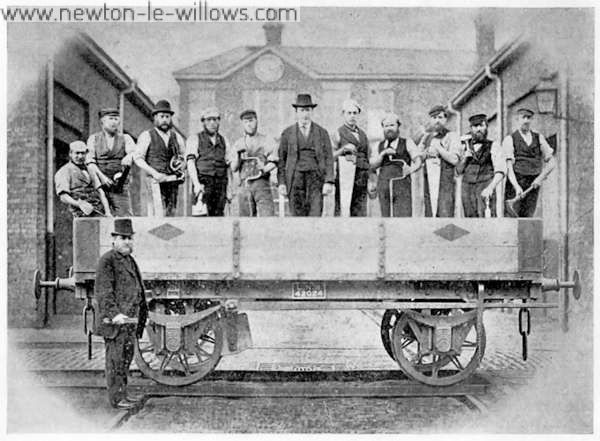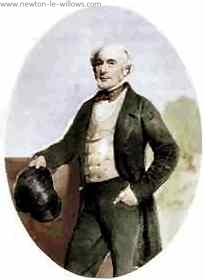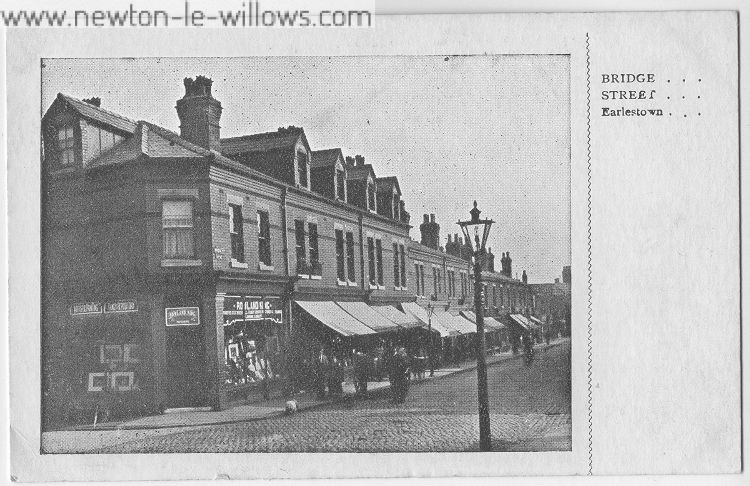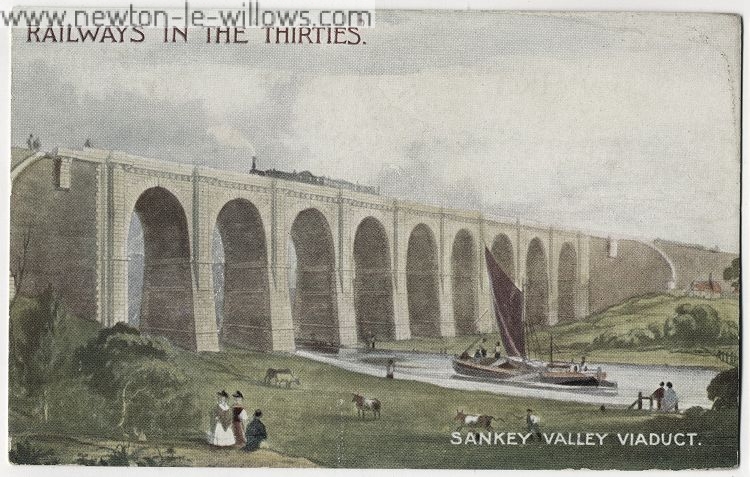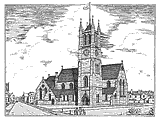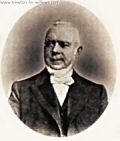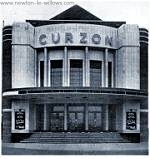As the Vulcan and Viaduct Foundries swung into production skilled workers were attracted from other parts of Lancashire as well as further afield. To house their workers Stephenson and Tayleur built a model village beside their factory, Vulcan Village. Originally only of three rows it was developed as the factorys business increased. Seeing the advantages to be gained from setting up a factory in Newton where skilled labour was becoming available, two other business partners founded the firm of Jones and Potts and built a factory known as the Viaduct…
Read More >>Tag: Earlestown
Sir Hardman Earle (1792 – 1877)
Sir Hardman EarleHardman Earle was born 11 JUL 1792, and died 25 JAN 1877, for Earlestown one of the most important days of his life was the 1st March 1853, This was the day that the London and North Western Railway, under the direction of Sir Hardman Earle, leased from Messrs. Jones & Potts a small works known as the Viaduct FoundryIn 1853 there were only around 30 houses available for the viaduct workers but as the foundry became busier, it expanded and the houses and town that was built…
Read More >>Earlestown Wagon Works: the Viaduct Foundry
One hundred and fifty one years ago, on March 1, 1853, the London & North Western Railway leased from Jones & Potts a small engineering works known as the Viaduct Foundry, so named from its proximity to Stephensons Sankey Viaduct over the St. Helens Canal on the original Liverpool & Manchester Railway. Seven years later, on May 11, 1860, the L.N.W.R. purchased the property outright for the sum of 15,000. The Viaduct Works was founded by Jones, Turner & Evans in 1833, and among other products, including pumping machinery for…
Read More >>Earlestown: A History
Newton le Willows had for years had a glass works, making bottles and flat glass, this flat glass was at the time made by spinning out a large blob of glass into a large circular plate, and then cutting from this large flat plate, the largest square or rectangles possible from the centre to the edge, because the flat glass was taken from this spinning out of a single blob, it meant it was pretty impossible to make a very large single sheet of glass, the max size available, no…
Read More >>Anti-German Riot In Earlestown
14th May 1915: EXTRA ORDINARY SCENES. Earlestown on Monday night was the centre of a scene absolutely unprecedented in its history. The primary cause was of course; the bitter feeling that has been gradually growing stronger against German aliens throughout the country a feeling which reached fever heat on the day following the sinking of the “Lusitania,” gathered in intensity on the Sunday, and then, when Mondays papers told the tale of how Liverpool, had set the example on Sunday evening, it rose to such a height here that there…
Read More >>Tommy Burns jump off the 9 Arches?
Tommy Burns was a young Widnes man who had been causing no end of a sensation up and down the country by his high diving feats. He laid no claims to being a great) swimmer but he had cer?tainly perfected the art of diving. Height never daunted him, he always gave a per?fect performance and did not demand very deep water for he had no sooner cut the water than he was swimming on the surface Burns was travelling about the country giving exhibitions of diving for what he could…
Read More >>ST. John the Baptist, Earlestown Parish Church
Canon Whitley, Rector of Newton-in-Makerfield, recognised that the population of Earlestown was growing and there was a need for their own Parish Church. On May 27,1874, Canon Whitley, called a meeting at which it was decided to build a new church in the Earlestown area. The Original Design by Whitley & Fry of Dover The original plans for the Church were drawn up by Messrs. Whitley & Fry of Dover and they produced a design for a building in Early English style to seat 900 persons and costing an esitmated…
Read More >>Emmetts Brow and Earlestown Wagon Works
In the website forums the last few days there have been a few requests for information about Emmetts Brow, where it is and who was its named after, I thought that this extract from an LNWR Book I have would help answer a few questions. Mr. J. Watson Emmett EARLESTOWN came to be the primary wagon manufacturing and repair works for the LNWR. The origin of the Works can be traced back to before the formation of the company. The Grand Junction Railway (GJR) was opened in 1837 from Birmingham…
Read More >>The Curzon Cinema, 28th October, 1935
Heres some history for the Curzon Cinema, which I have transcribed from an original opening day booklet. Since the Curzon is now but a burned out shell I thought it appropriate to add some history on the building into the website OPENING CEREMONY At 6.15 p.m. on Monday the 28th of October, 1935. The Managing Director will introduce Mrs. Frank Haslam, who has kindly consented to open the Curzon Luxury Cinema. Following the Opening Ceremony, a bouquet will be presented to Mrs. Haslam by Miss Houghton. On behalf of the…
Read More >>